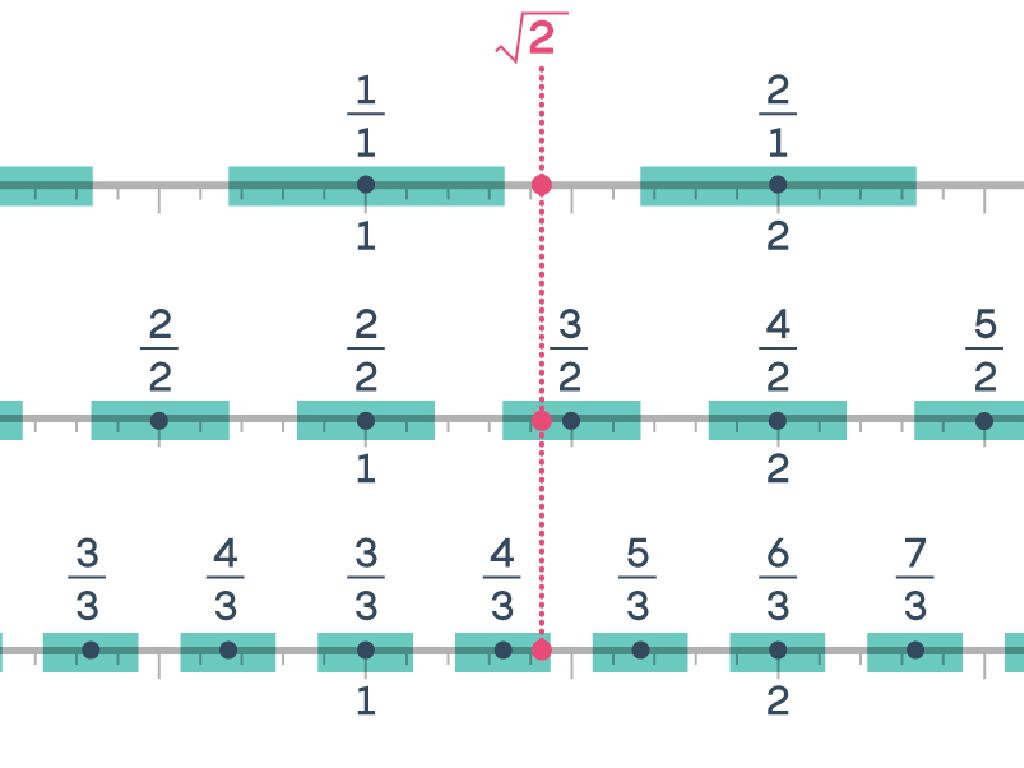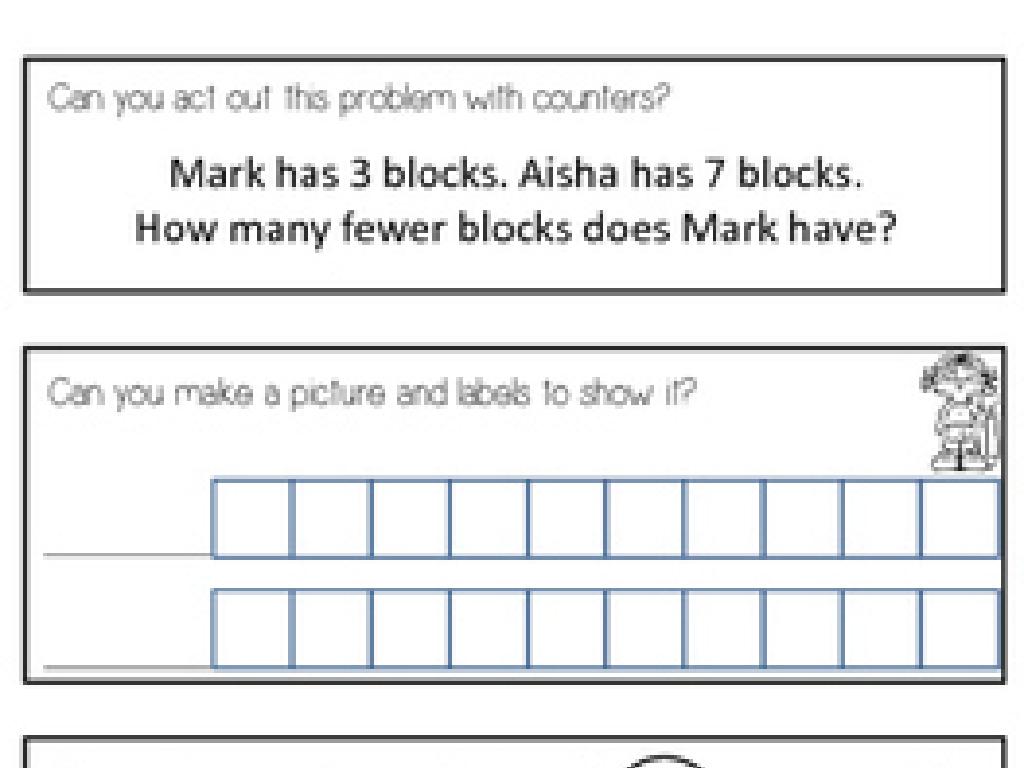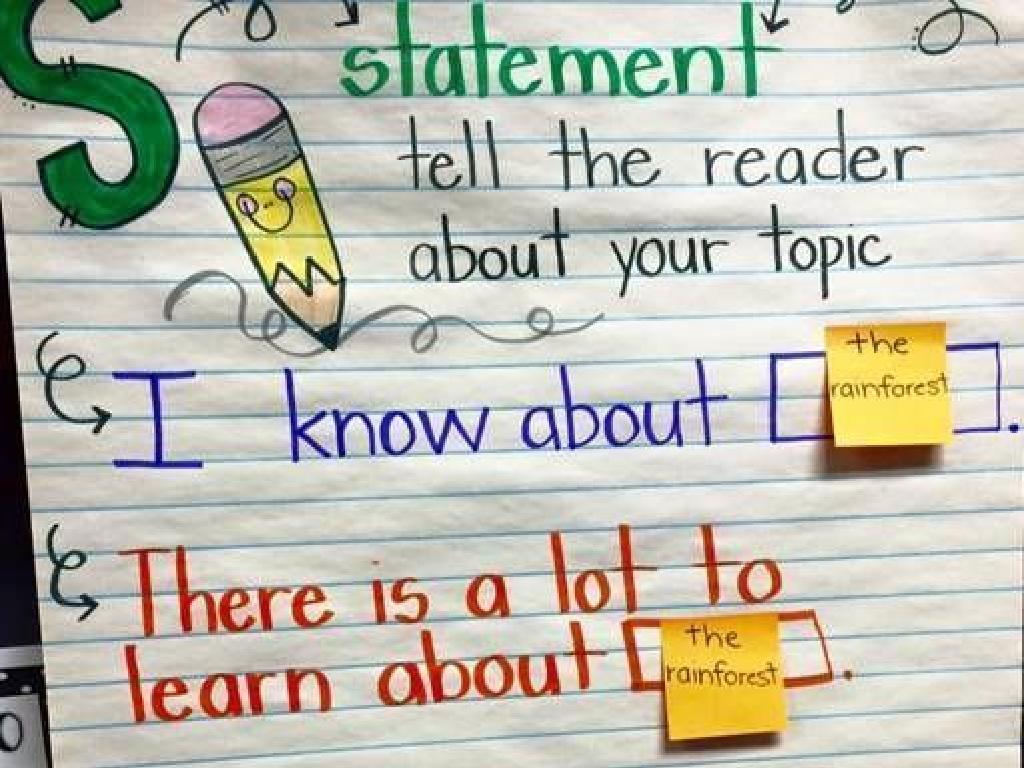Use In-Text Citations (Mla 8Th 9Th Editions)
Subject: Language arts
Grade: Sixth grade
Topic: Research Skills
Please LOG IN to download the presentation. Access is available to registered users only.
View More Content
Mastering Research Skills: In-Text Citations
– The value of giving credit
– Acknowledging others’ work avoids plagiarism
– In-text citations explained
– Brief references within your writing to show sources
– Purpose of MLA format
– MLA format standardizes writing, making it easy to follow
– Practicing proper citations
|
This slide introduces students to the concept of in-text citations as part of essential research skills in Language Arts. Emphasize the importance of giving credit to original authors to avoid plagiarism. Explain that in-text citations are brief references in the body of a research paper that point to the source of information. MLA format is a common citation style that provides a consistent method for writing papers and citing sources. During the lesson, provide examples of in-text citations and allow students to practice creating them using MLA guidelines. This will help them understand how to integrate sources into their own writing while respecting intellectual property.
Understanding MLA Format
– What is MLA Format?
– MLA: Modern Language Association’s guidelines
– Purpose of MLA in research
– Ensures proper structure and referencing
– Consistency in writing
– Standardizes paper layout, font, and spacing
– Crediting original authors
– Avoids plagiarism by acknowledging sources
|
MLA format is a set of guidelines developed by the Modern Language Association for structuring research papers. This slide introduces students to the importance of using a standardized format for their writing, which not only creates a professional appearance but also ensures that all necessary information is included and properly cited. Emphasize the role of MLA in preventing plagiarism and the ethical aspect of giving credit to the original authors of the sources used in their research. Provide examples of in-text citations and a Works Cited page to illustrate how sources should be documented according to MLA standards. Encourage students to ask questions and provide them with resources for further reading on MLA guidelines.
Mastering In-Text Citations (MLA Style)
– In-text citations within your paper
– Short references to sources
– Give credit to original ideas
– Include author’s last name
– Example: (Smith 29) indicates John Smith’s work on page 29.
– Page number for reference
– Helps readers locate source material
|
This slide introduces the concept of in-text citations according to MLA guidelines, which are essential for writing research papers. In-text citations appear in the body of the paper and provide a brief reference to the source material, allowing readers to find the full citation on the Works Cited page. They typically include the author’s last name and the page number where the referenced information can be found. For example, a citation might look like this: (Smith 29). It’s important to teach students that in-text citations are not just about avoiding plagiarism; they’re also about joining a scholarly conversation by acknowledging the work of others. During the lesson, provide examples of how to format citations from different types of sources and explain the importance of being precise and consistent in citation formatting.
Mastering In-Text Citations: MLA Style
– Quoting directly from a source
– Use the author’s last name and page number: (Smith 22)
– Paraphrasing an author’s idea
– Even when restating in your own words, cite with: (Smith 22)
– Citing works with two authors
– Include both authors’ last names: (Smith and Jones 45)
– Understanding page numbers in citations
– The page number shows where the information was found
|
This slide aims to teach students the basics of using in-text citations according to MLA 8th and 9th editions. Emphasize the importance of giving credit to original authors to avoid plagiarism. Explain that whether they are quoting directly or paraphrasing, the citation format remains the same with the author’s last name and the page number. For works with two authors, both last names should be included. Clarify that the page number helps readers locate the exact information in the source material. Provide examples from a text they are familiar with and encourage them to practice citing different types of sources.
Citing Sources Without an Author
– Use the work’s title in citations
– If there’s no author, the title stands in its place.
– Shorten long titles for convenience
– If the title is more than a few words, use a shortened version.
– Italicize titles of standalone works
– Books and movies should be italicized in citations.
– Use quotes for titles of short works
– Articles, poems, and chapters should be in quotation marks.
|
When teaching students about in-text citations without an author, emphasize the importance of using the title to give credit to the source. Explain that long titles can be shortened to the first few words to make the citation more readable. Clarify the difference between standalone works (like books and movies) which should be italicized, and shorter works (like articles and poems) which should be in quotation marks. Provide examples of both types of citations. This will help students understand how to properly format their citations in their research papers following MLA guidelines.
Practicing In-Text Citations: MLA Style
– Reviewing citation examples
– Citing a book quote
– For a book: (Author’s Last Name page number). Example: (Smith 23).
– Citing website information
– For a website: (Author’s Last Name). Example: (Johnson).
– Understanding MLA format
|
This slide aims to provide students with a practical understanding of how to use in-text citations according to MLA 8th and 9th editions. Start by reviewing some examples as a class to ensure students grasp the concept. Explain the importance of giving credit to original sources to avoid plagiarism. For a book citation, show how to include the author’s last name and the page number where the quote can be found. For a website, since page numbers are not available, instruct students to use the author’s last name only. If the author’s name is not available, guide them to use the title of the article or webpage. Emphasize that MLA format is commonly used in Language Arts and is important for their research skills development. Provide additional examples and encourage students to try creating citations from their reading materials.
Class Activity: Crafting In-Text Citations
– Pair up for citation practice
– Use library resources for examples
– Write MLA style citations
– Follow MLA 8th or 9th edition guidelines
– Share citations with the class
|
This activity is designed to give students hands-on experience with MLA in-text citations. Have the class form pairs to encourage collaboration. Provide a selection of library books or articles for students to choose from, ensuring a variety of sources. Guide them on how to write citations according to the MLA 8th or 9th edition standards, focusing on the author’s last name and page number format. Once they have written their citations, ask pairs to share with the class to learn from each other’s examples. Possible activities: 1) Compare citations of different sources, 2) Find and correct errors in sample citations, 3) Create a citation for a hypothetical source, 4) Write citations for both direct quotes and paraphrasing, 5) Discuss why citations are important in research.
Review: The Role of In-Text Citations
– Recap of today’s lesson
– Significance of in-text citations
– They give credit to sources and avoid plagiarism.
– Open Q&A session
– Encourage curiosity and understanding
– Asking questions helps clarify doubts and reinforces learning.
|
This slide aims to summarize the key points from the lesson on in-text citations according to MLA 8th and 9th editions. It’s crucial to emphasize the importance of giving proper credit to the original authors to avoid plagiarism and maintain academic integrity. Encourage students to ask any lingering questions they might have about in-text citations or any part of the lesson. This is also an opportunity to foster a classroom environment where curiosity is valued and students feel comfortable seeking clarification. Be prepared to provide examples or further explanations as needed to ensure students leave the class with a solid understanding of the material covered.
Homework: Mastering In-Text Citations
– Find a book or article for citation
– Write one direct quote citation
– Use quotation marks and author’s last name, page number
– Write two paraphrased citations
– Restate the info in your own words with author’s last name, page number
– Share your citations next class
|
This homework assignment is designed to help students practice using MLA 8th 9th edition in-text citations. Students should find a source, such as a book or article, and create three different citations from it. They must include one direct quote, which should be an exact copy of the original text enclosed in quotation marks, followed by the author’s last name and page number in parentheses. Additionally, students should create two paraphrased citations, where they restate the information in their own words, also followed by the author’s last name and page number. In the next class, students will have the opportunity to share their work, allowing them to learn from each other’s examples and understand the importance of giving proper credit to original sources in their writing.






